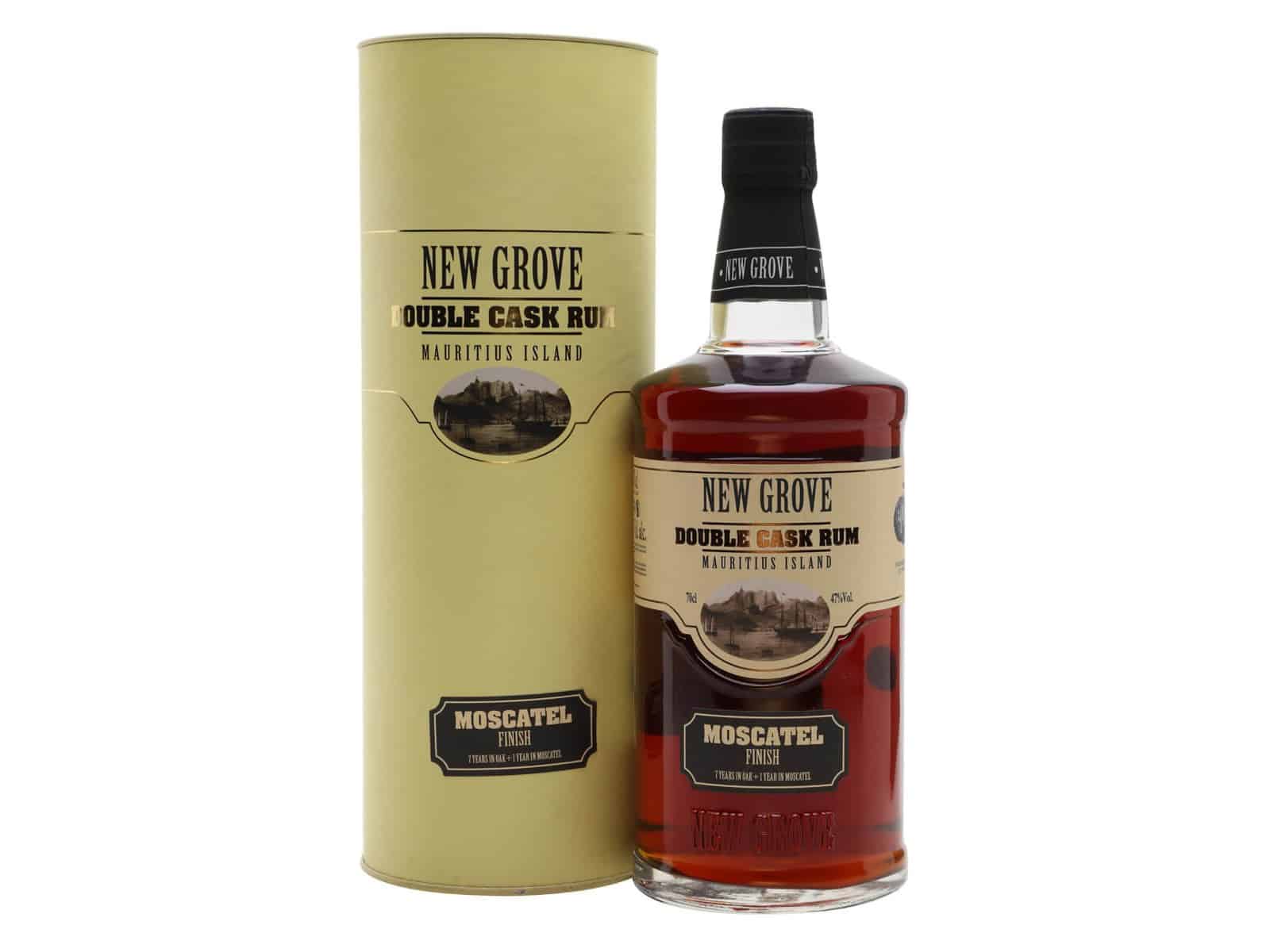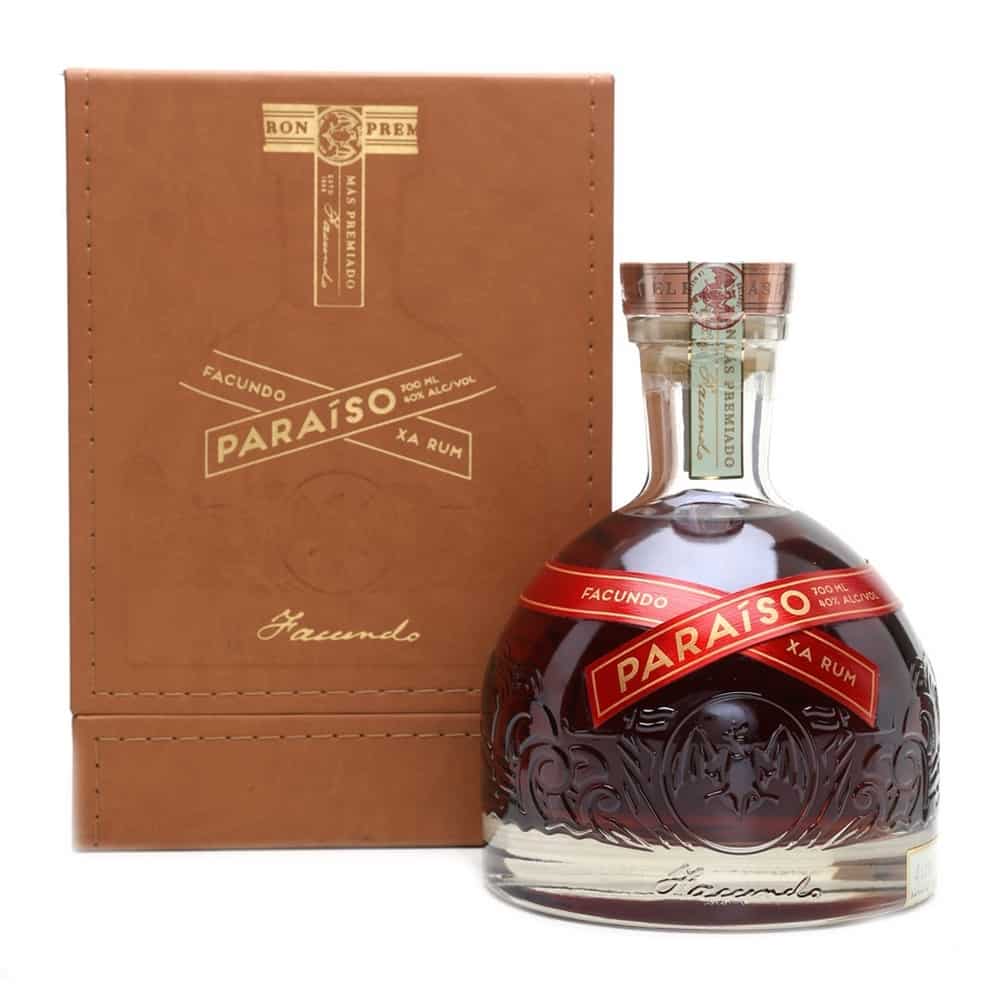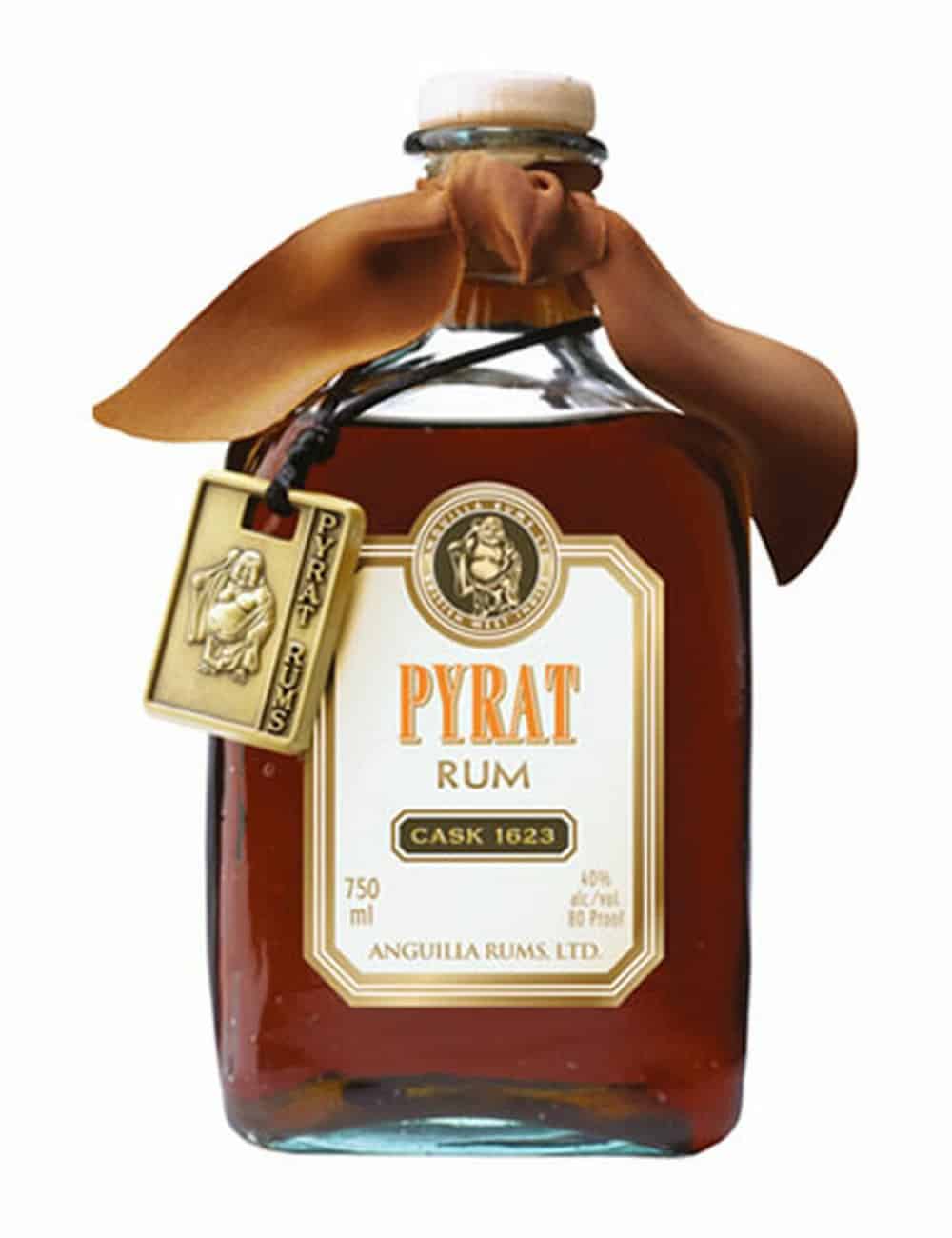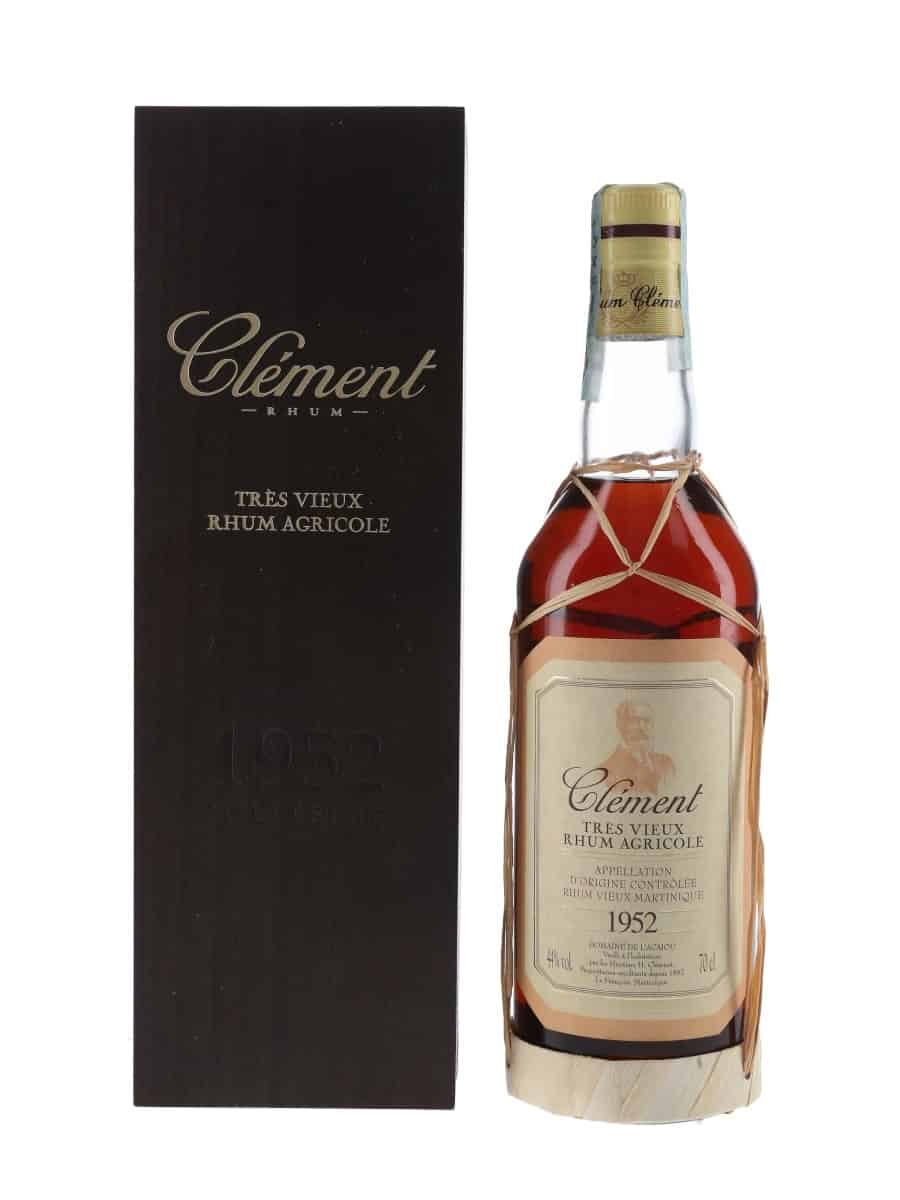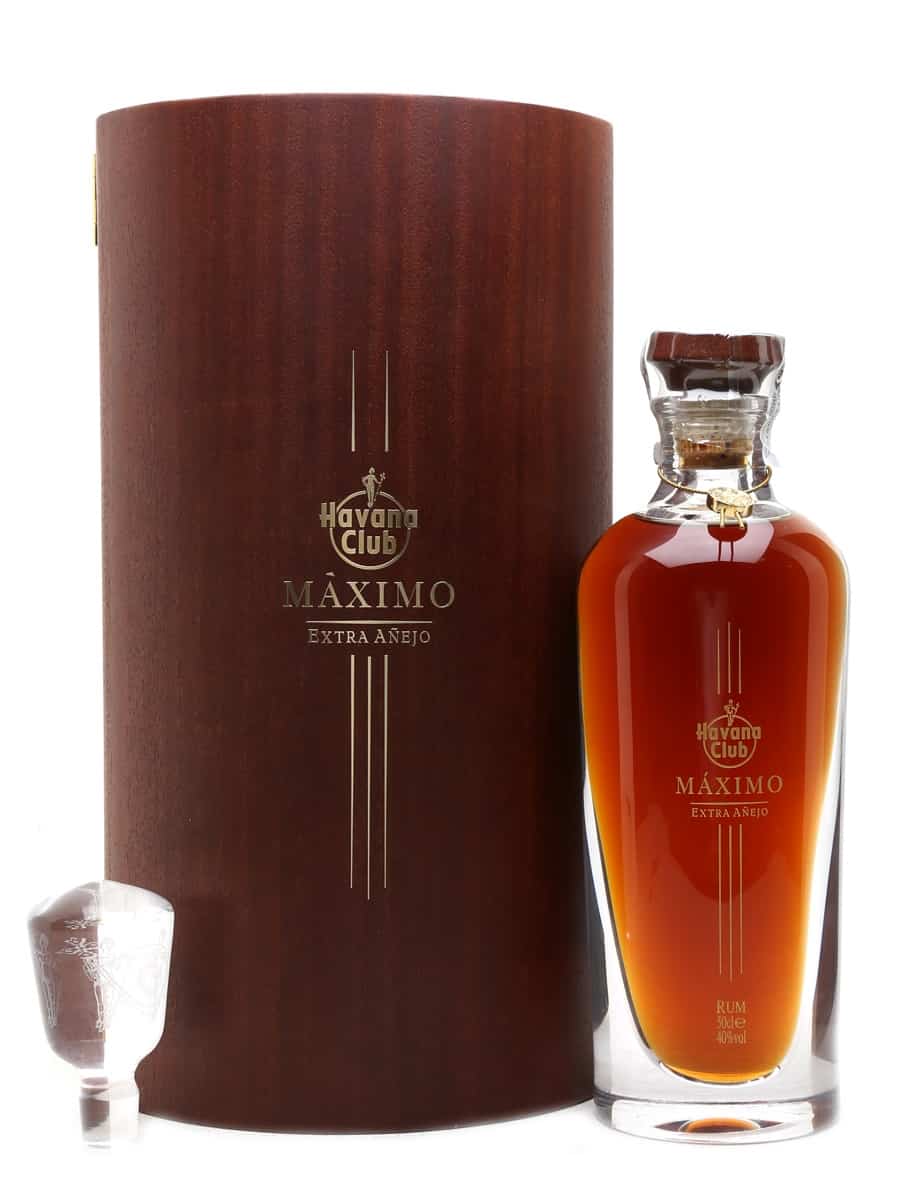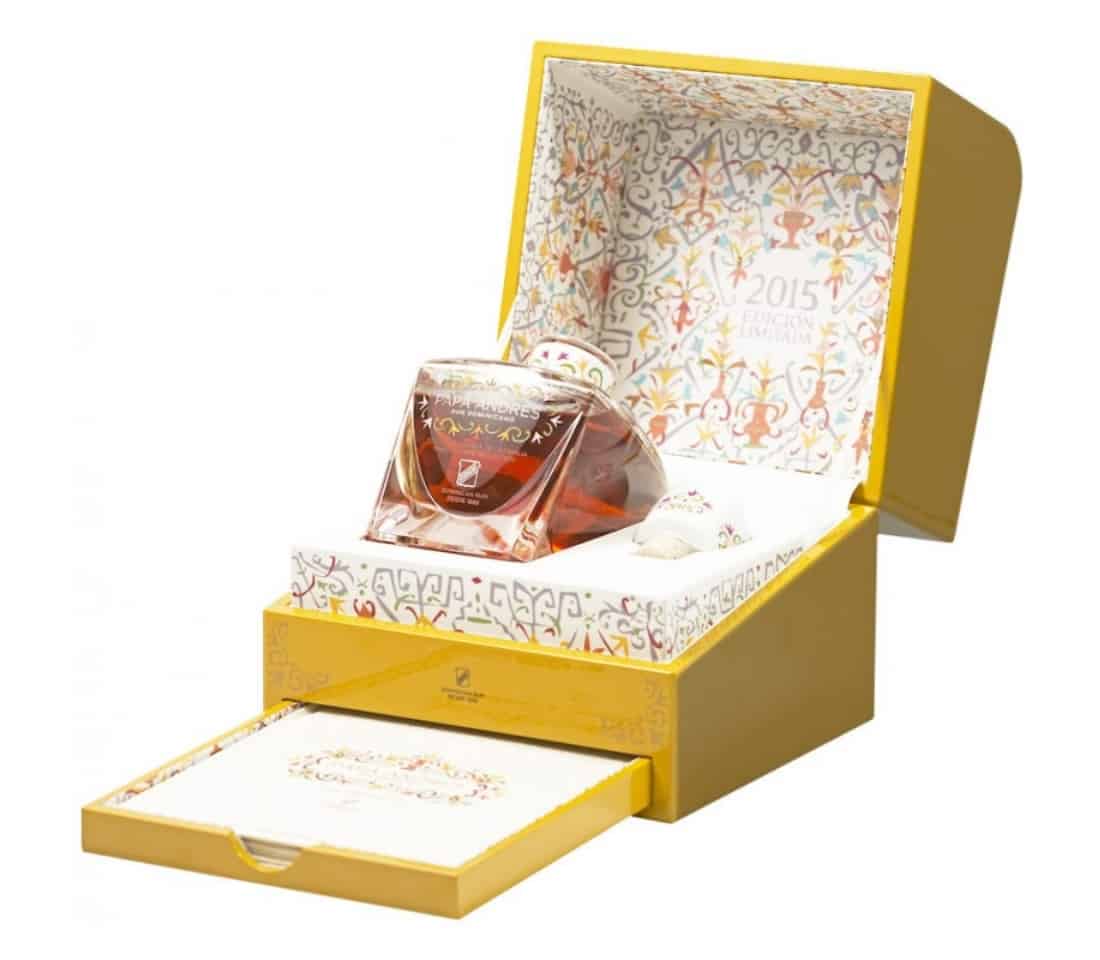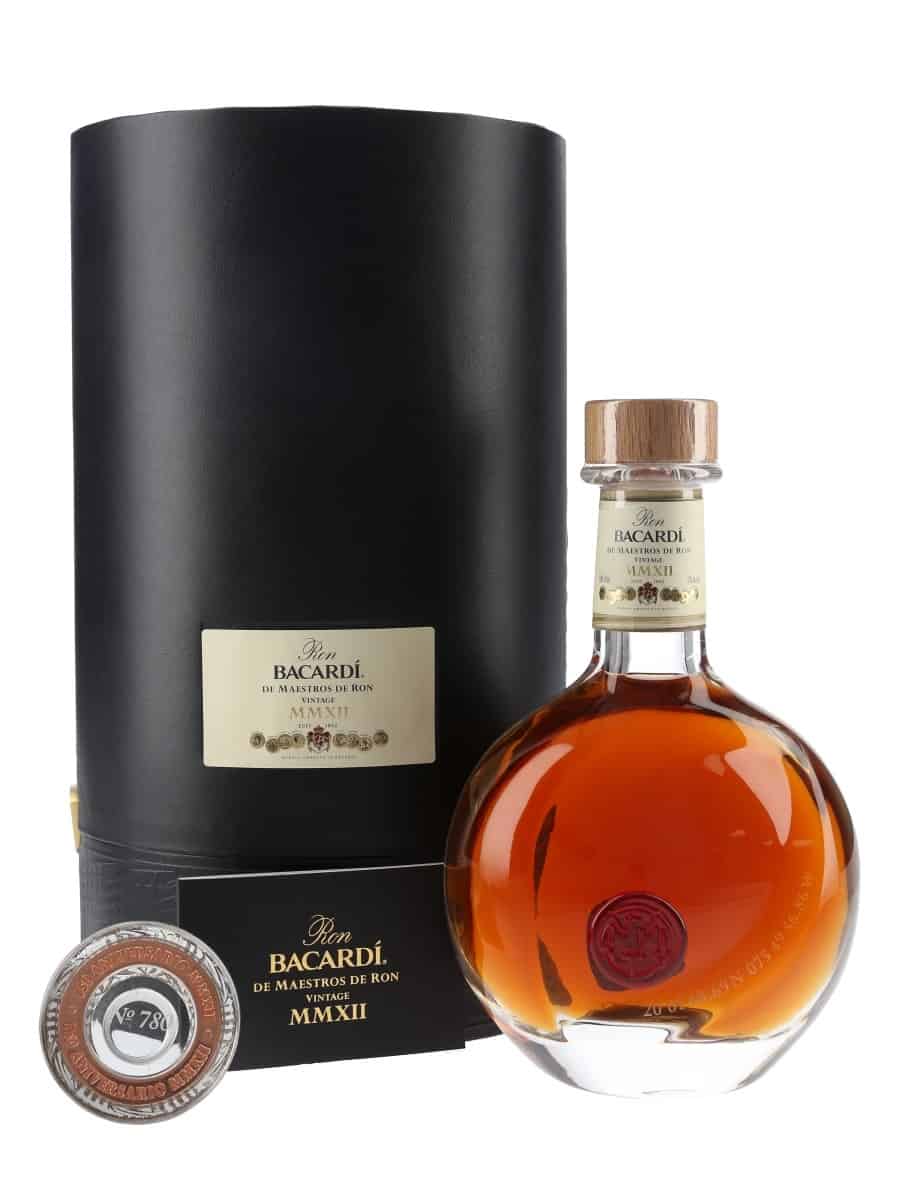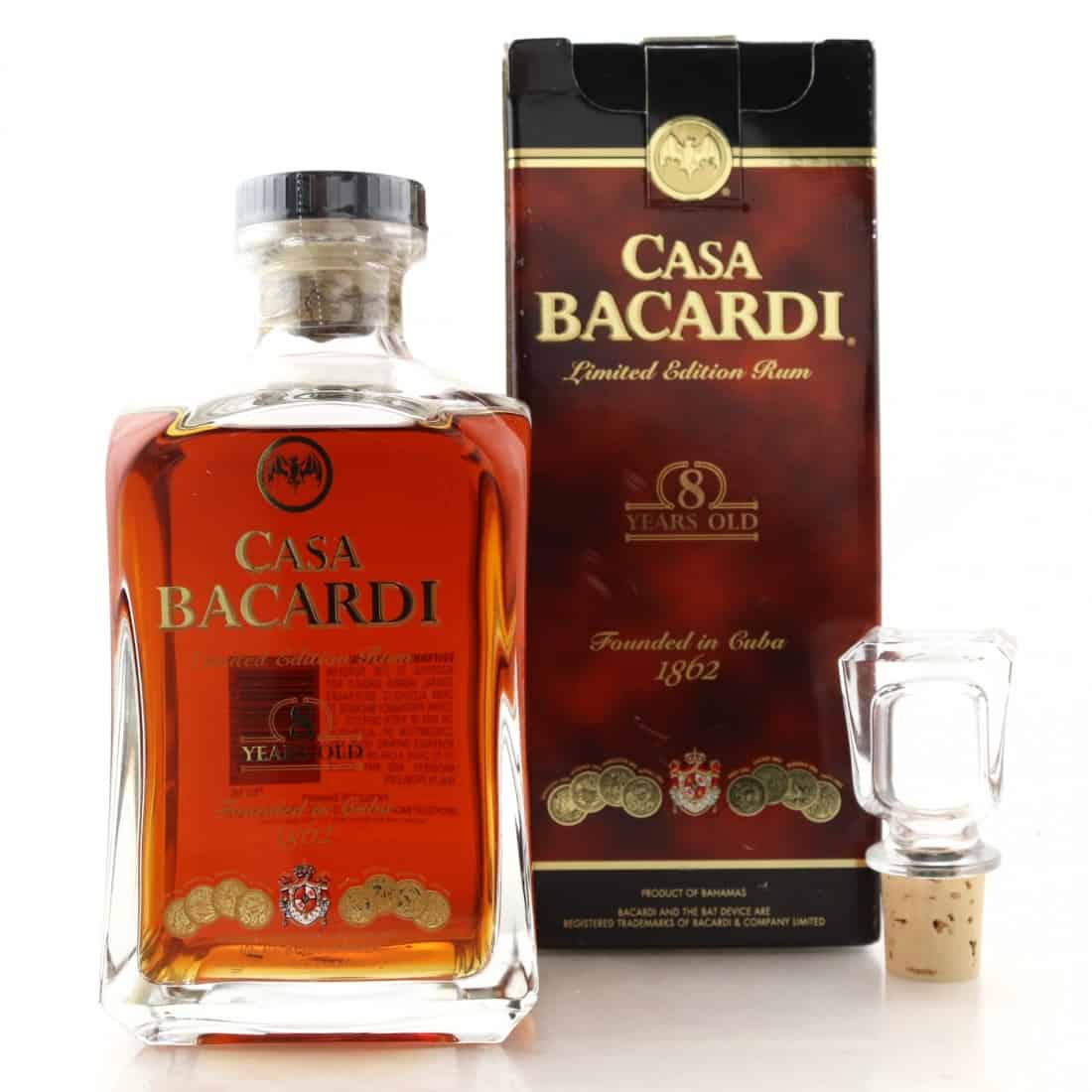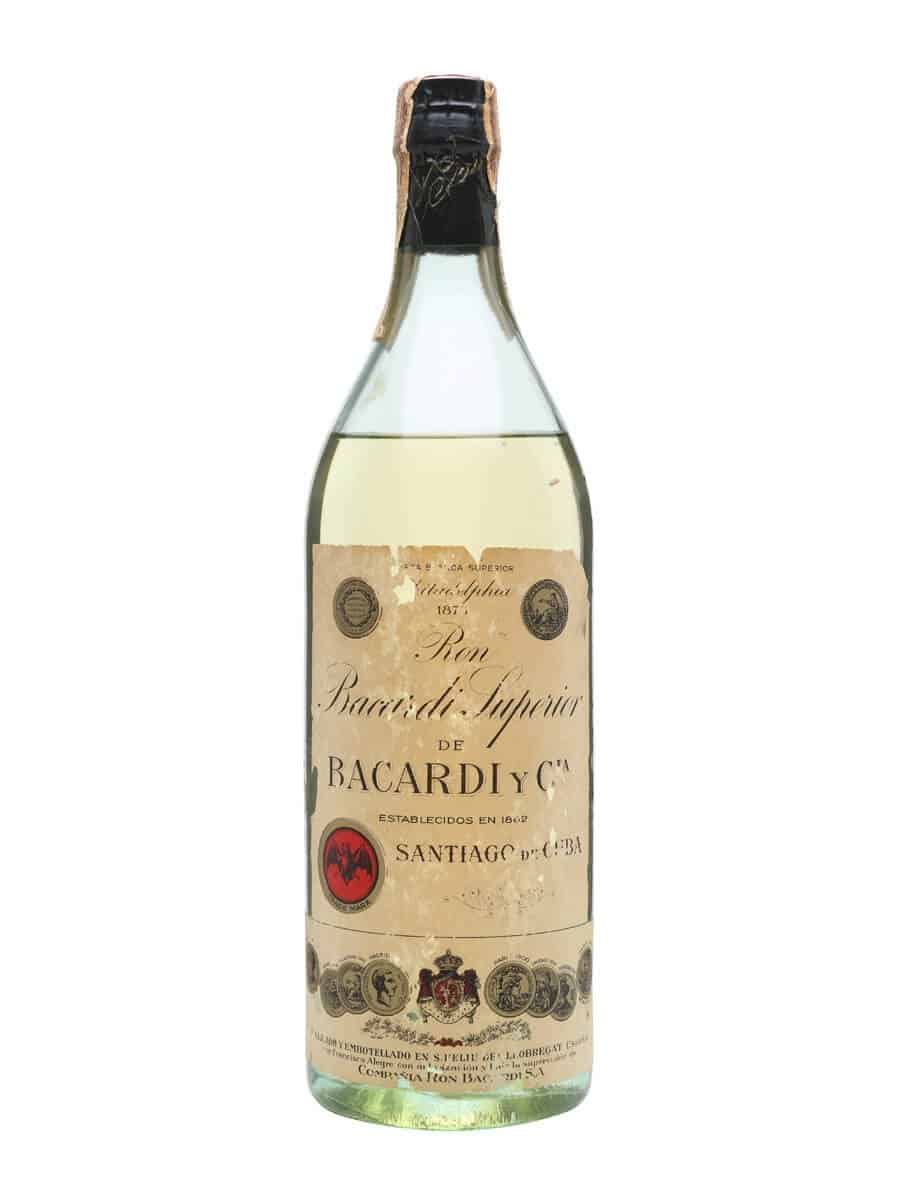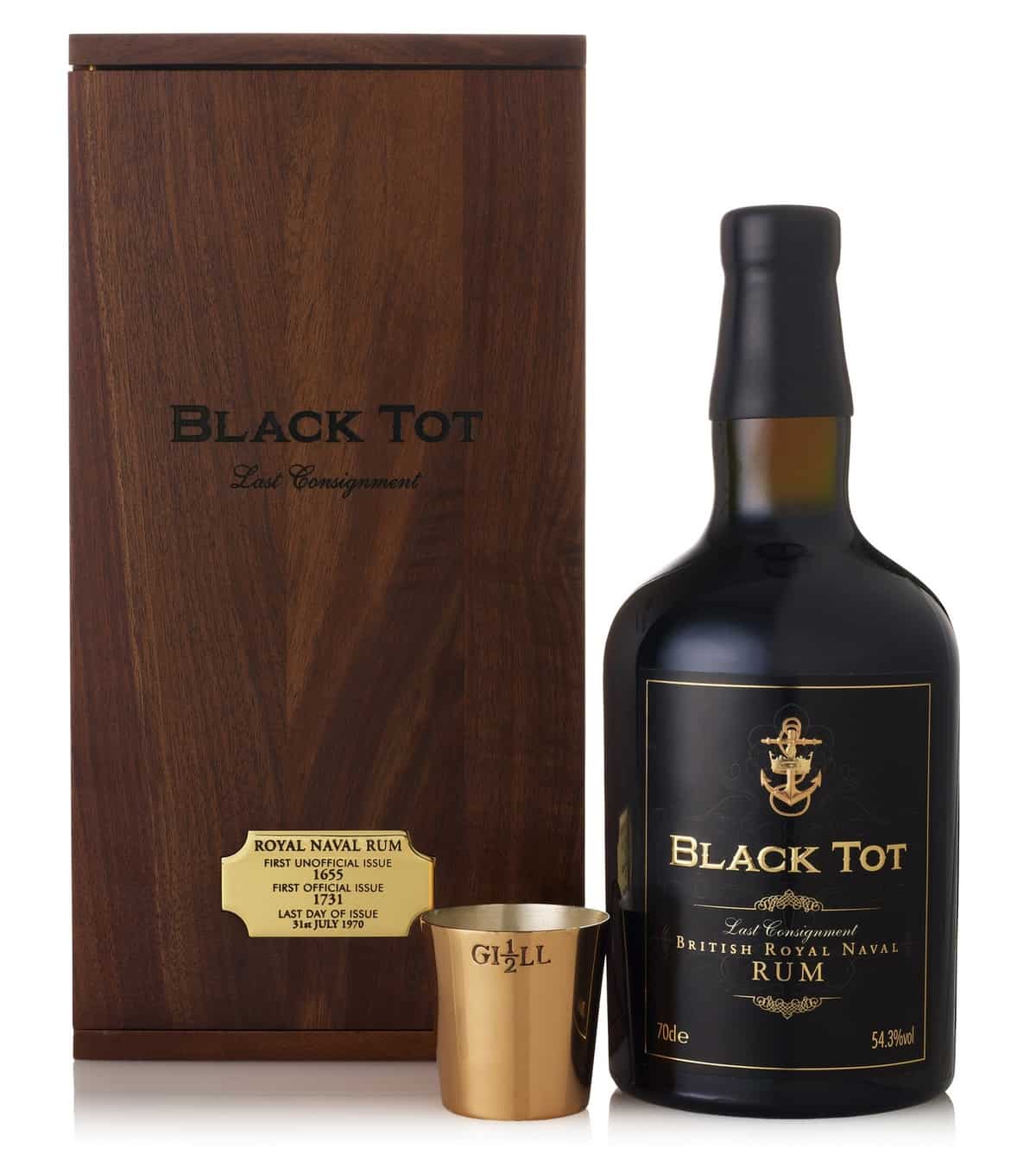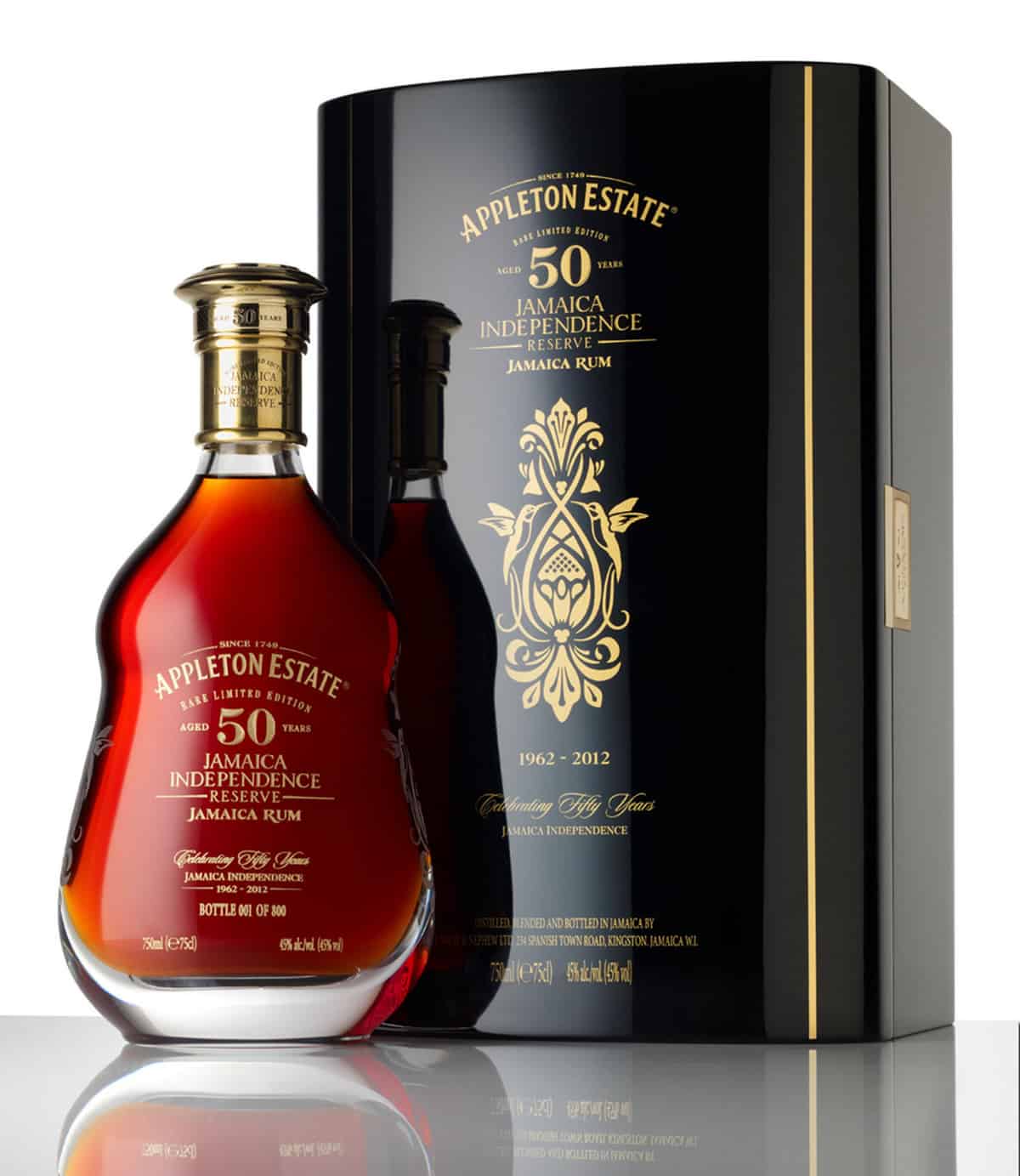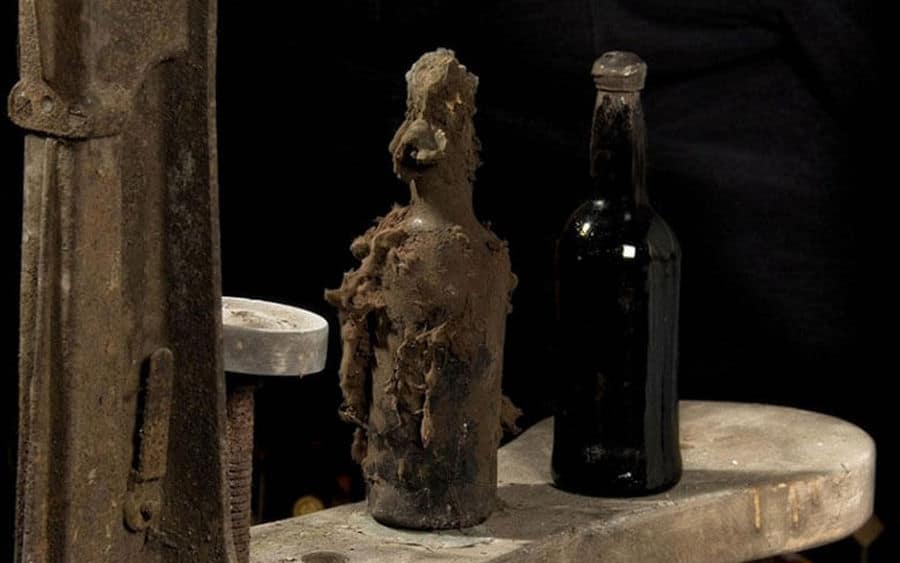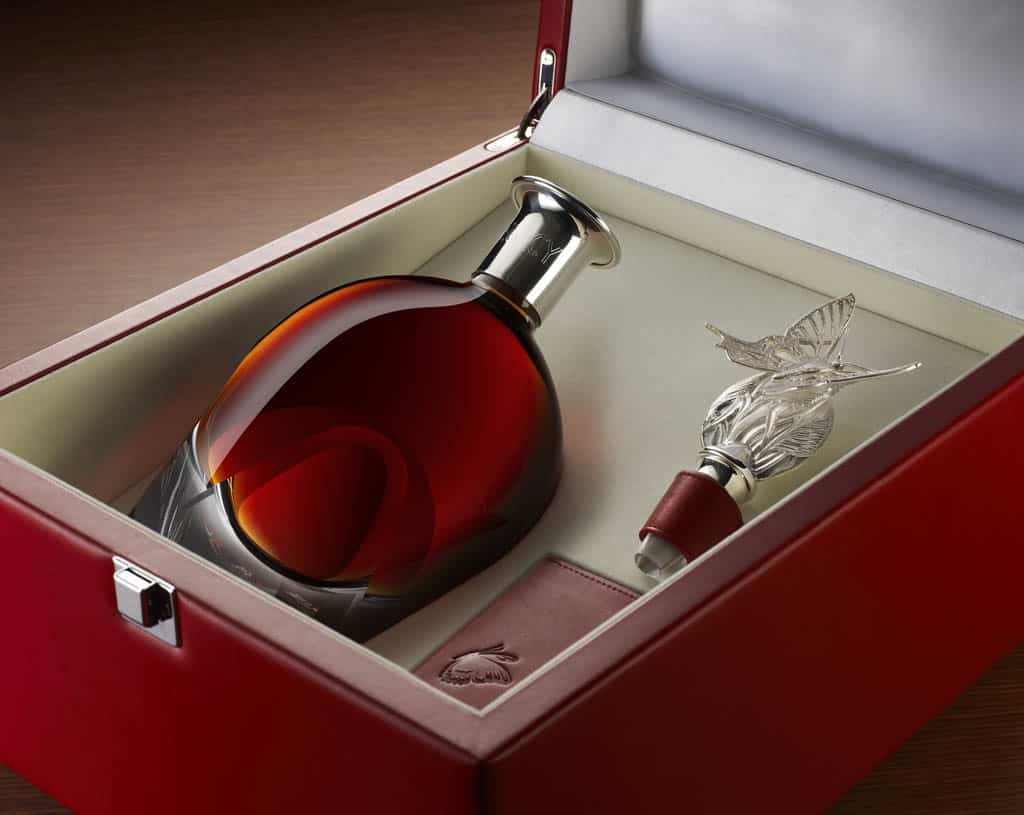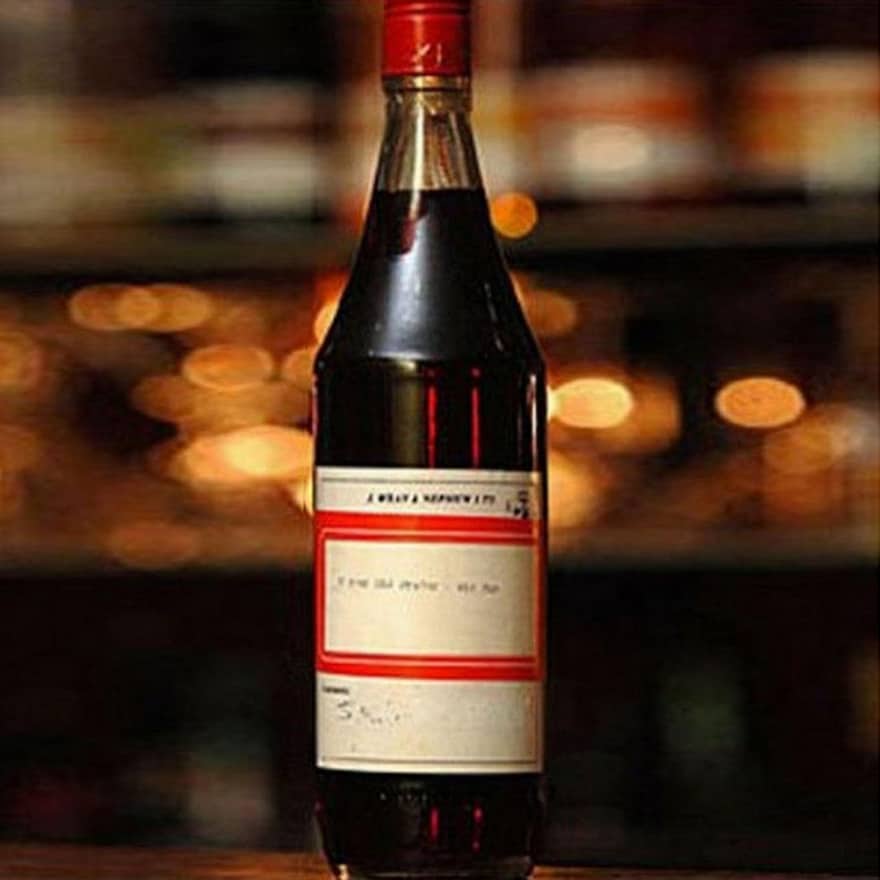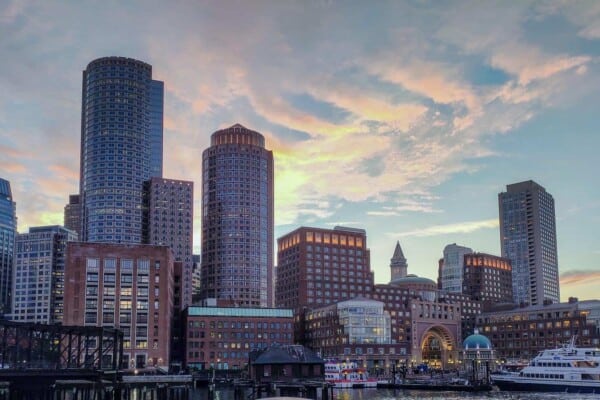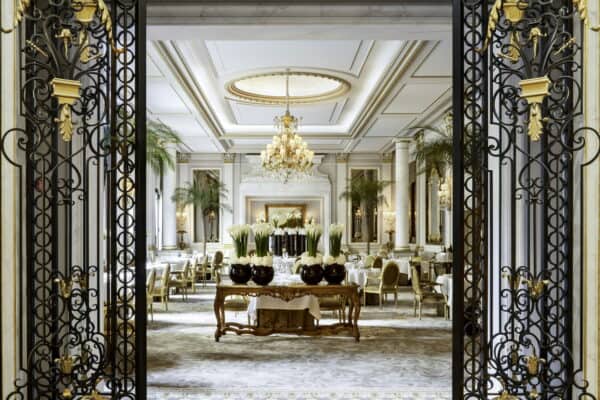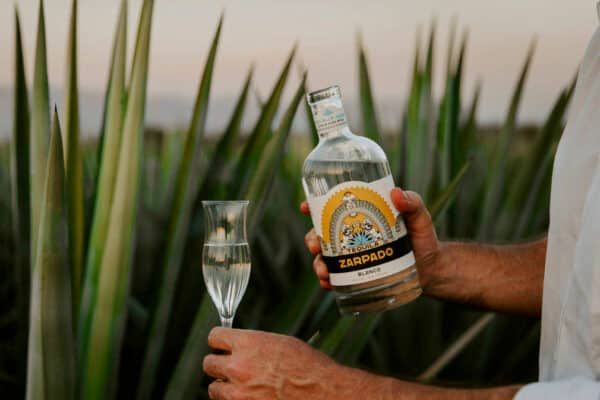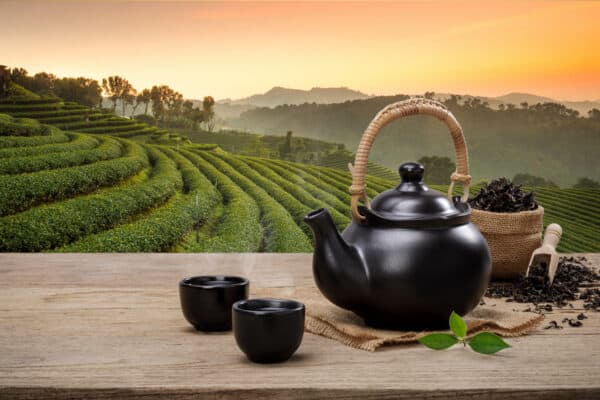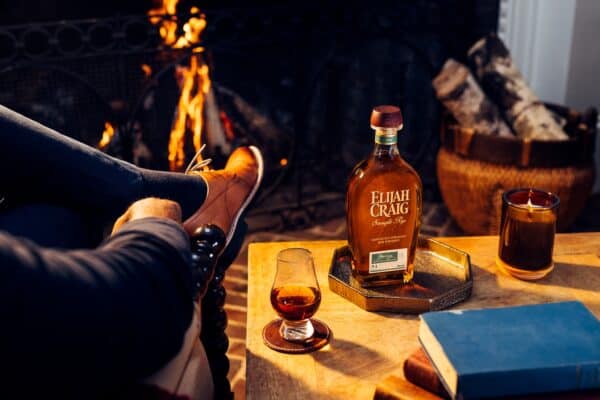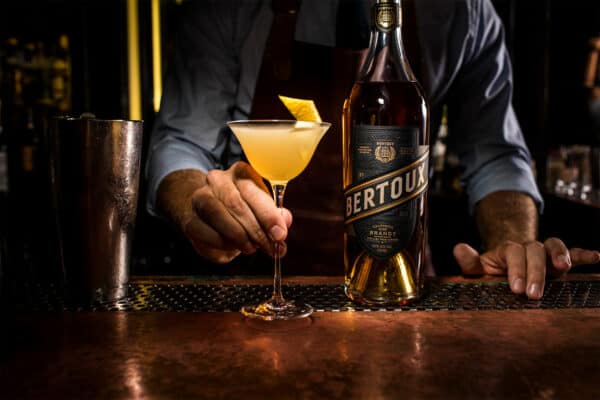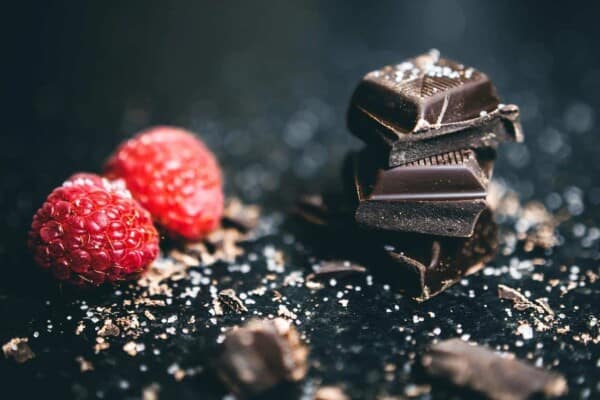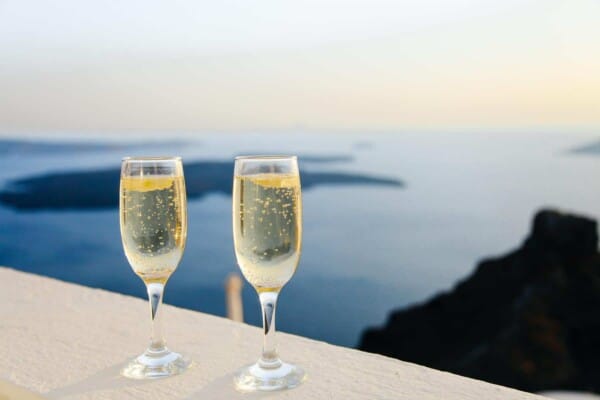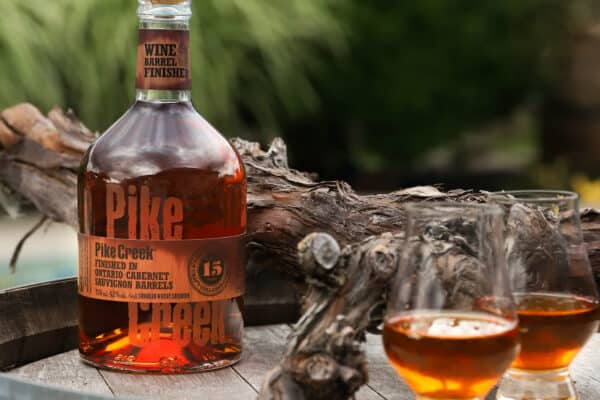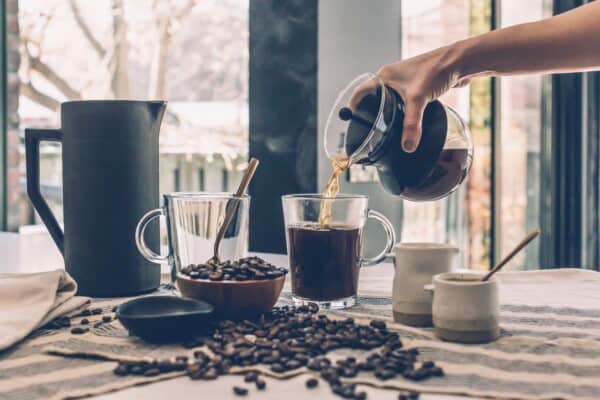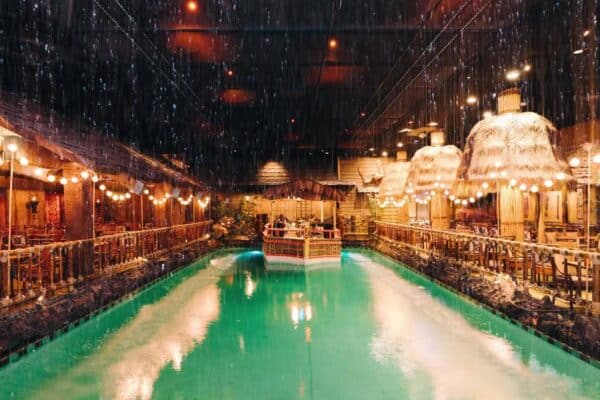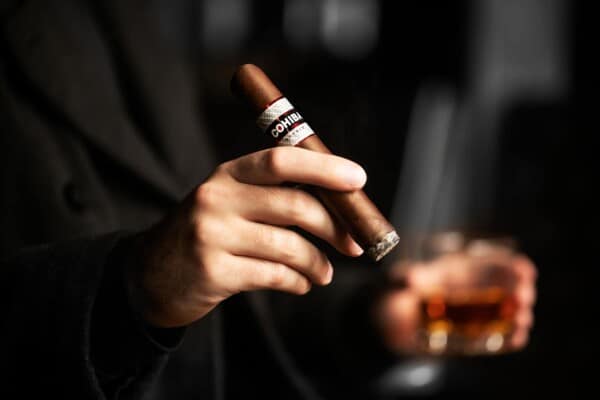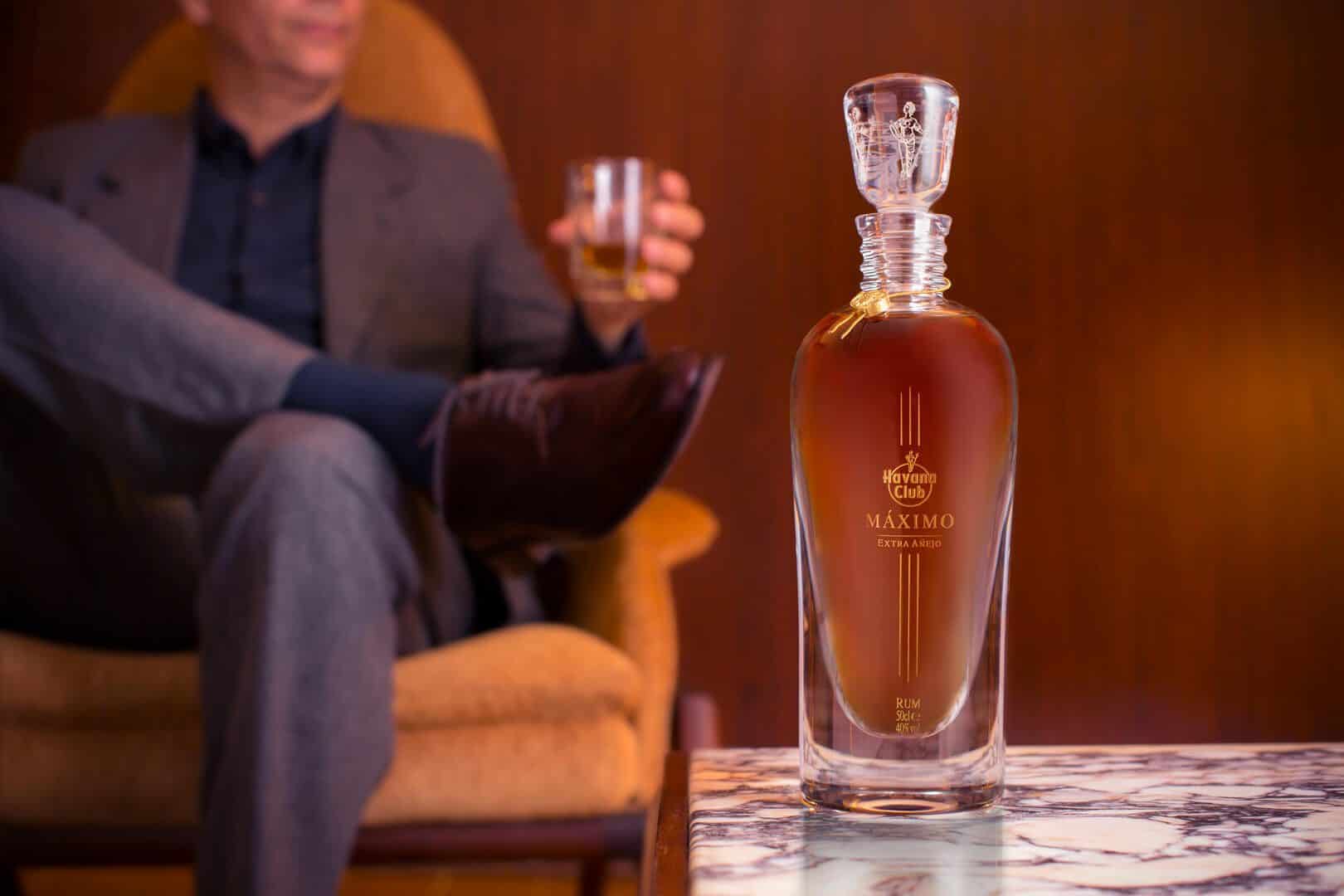
Sandy beaches, Caribbean rhythms, and a gentle breeze. We are all aware that rum has an outright tropical vibe that instantly transports you to the dancefloor. And don’t pretend you don’t enjoy Latin music; we know that is not true.
Rum enthusiasts are unanimous in their belief that rum, with its rich and silky mouthfeel, sweet flavor, and distinguishing taste, is one of the best alcoholic drinks ever made. And genuine rum connoisseurs will not exchange their beloved aroma of rum for even the finest single malts.
The history of a drink is frequently the most intriguing aspect of it. Not only do you get to enjoy a scrumptious beverage, but you also get to travel back in time and discover a period’s lifestyle. It’s a sensory journey that food connoisseurs, for instance, cannot replicate. Gourmets will never eat fruit harvested during the American Revolution or cheese manufactured during the Napoleonic wars.
Rum’s past is not simple or pleasant but is an integral part of global history. Rum is the first refined and produced alcohol. It was also the first spirit that was drunk for fun, not for medical reasons.
Without rum, we do not know how New England would have developed and what its principal trading instrument to jumpstart its prosperity in the New World would have been. However, we are getting way ahead of ourselves. Let’s hit the road from the beginning.
Rum’s History
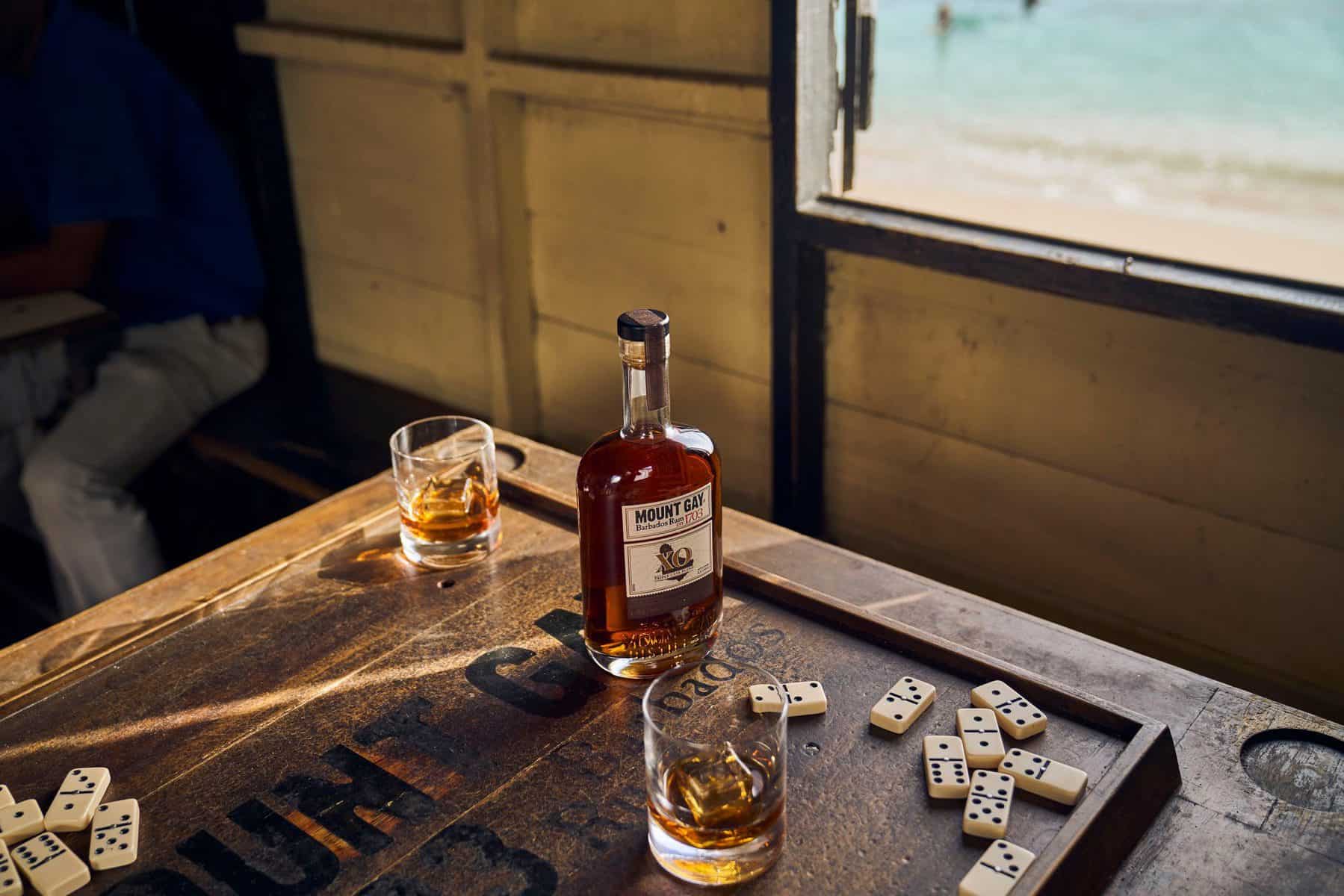
Sugar cane cultivation originated in New Guinea and its fermentation happened in India as early as 350 BC. Nevertheless, in the past, these fermented fluids were mainly employed for their healing properties and not for drinking.
Moving forward to the 1400s, when the explorers we all learned about in elementary school began discovering the world’s trade routes, an environment favorable to sugar cane cultivation was identified. Sugar, like spices at that time, was greatly valued in the trade network, even though cane needed a lot of manpower and irrigation.
Rum’s eventual worldwide prominence began with Barbados’ discovery in the early 1600s. Seeing that the area was ideal for growing sugar cane, navigator Richard Ligon brought in Brazilian cane knowledge, including machinery and slaves, but most importantly, distillation competence.
The first rum manufacturing occurred in the 1620s, and the famous drink was originally nicknamed “kill-devil” or “rumbullion”, but was eventually dubbed “rum” in 1667.
In little more than a decade, Barbados’s sugar lords grew to be some of the wealthiest people in the world, thanks to a thriving sugar and rum trade market. Because of the vital role of rum in this changing industry, it’s understandable why New Englanders were outraged when England attempted to put a customs duty on molasses from French colonial territories.
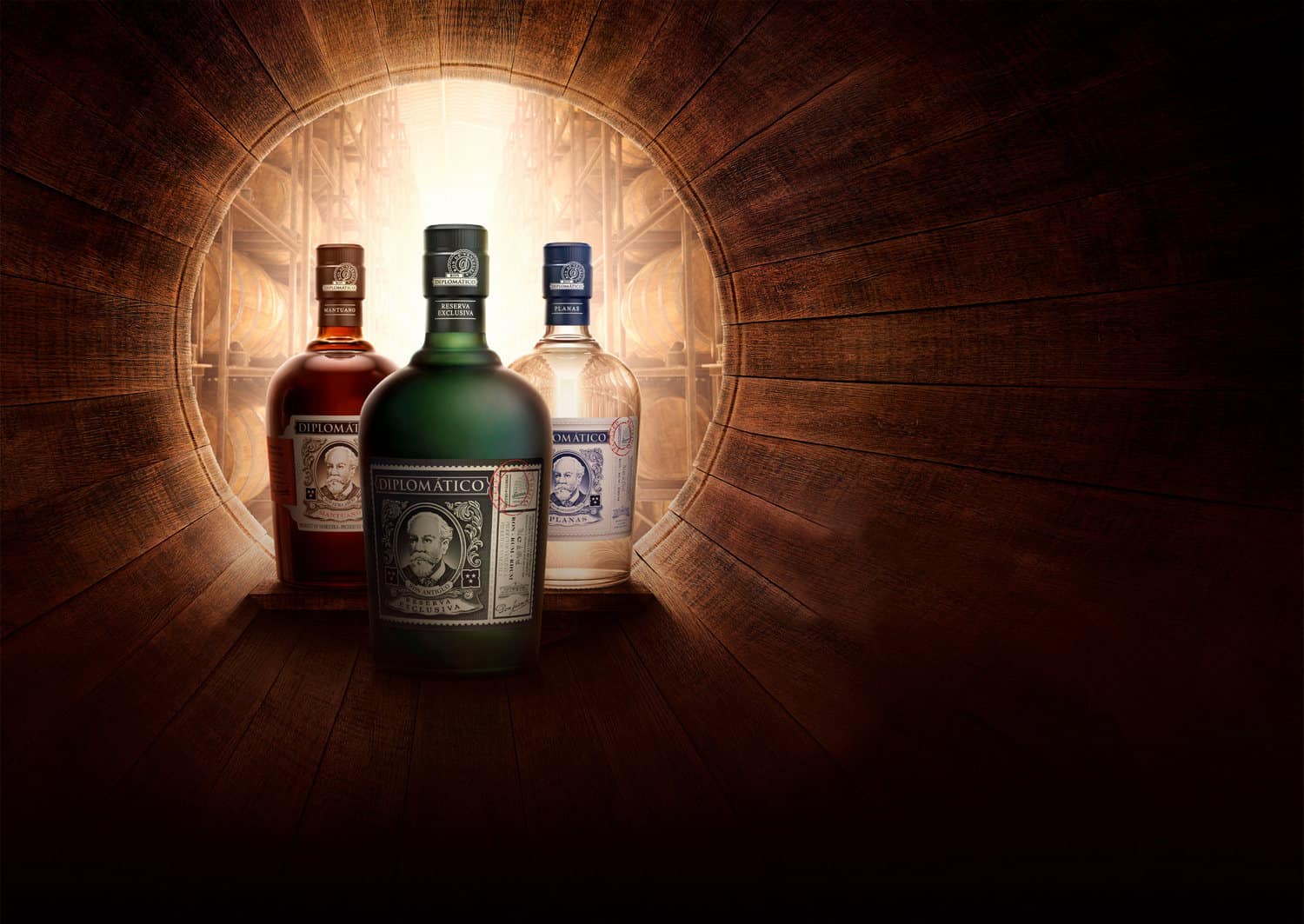
This ultimately resulted in the 1764 Sugar Act, which imposed a charge on molasses. As taxes were levied on more and more goods in the colonies by England, the now-famous “no taxation without representation” began to spread.
Yes, friends, we are dangerously close to the Boston Tea Party. Who would have guessed that a huge percentage of this perilous slope toward revolution began with rum? So where do we continue from here?
The British surrendered in 1781, and America screamed out for stability. Along the coastline, rum remained the preferred beverage, but the availability of molasses was badly affected during the war. Moreover, these new immigrants lacked expertise in sugarcane extraction but had lots of knowledge in grain distillation. What thrives very well in rural America? Grains.
Thus, whisky and other grain-based spirits gained appeal, while rum’s notoriety steadily decreased as the newcomer got famous. Today, the biggest rum distillery remains in the Caribbean with Bacardi’s huge San Juan, Puerto Rico, facility. Each day, it generates 100,000 liters.
Nowadays, rum is about to get a shot at redemption. And not the type of second chance that involves “Rum & Coke”, but a genuine fresh start worthy of this economy-developing, rebellion-urging drink.
What is Rum Made Of?
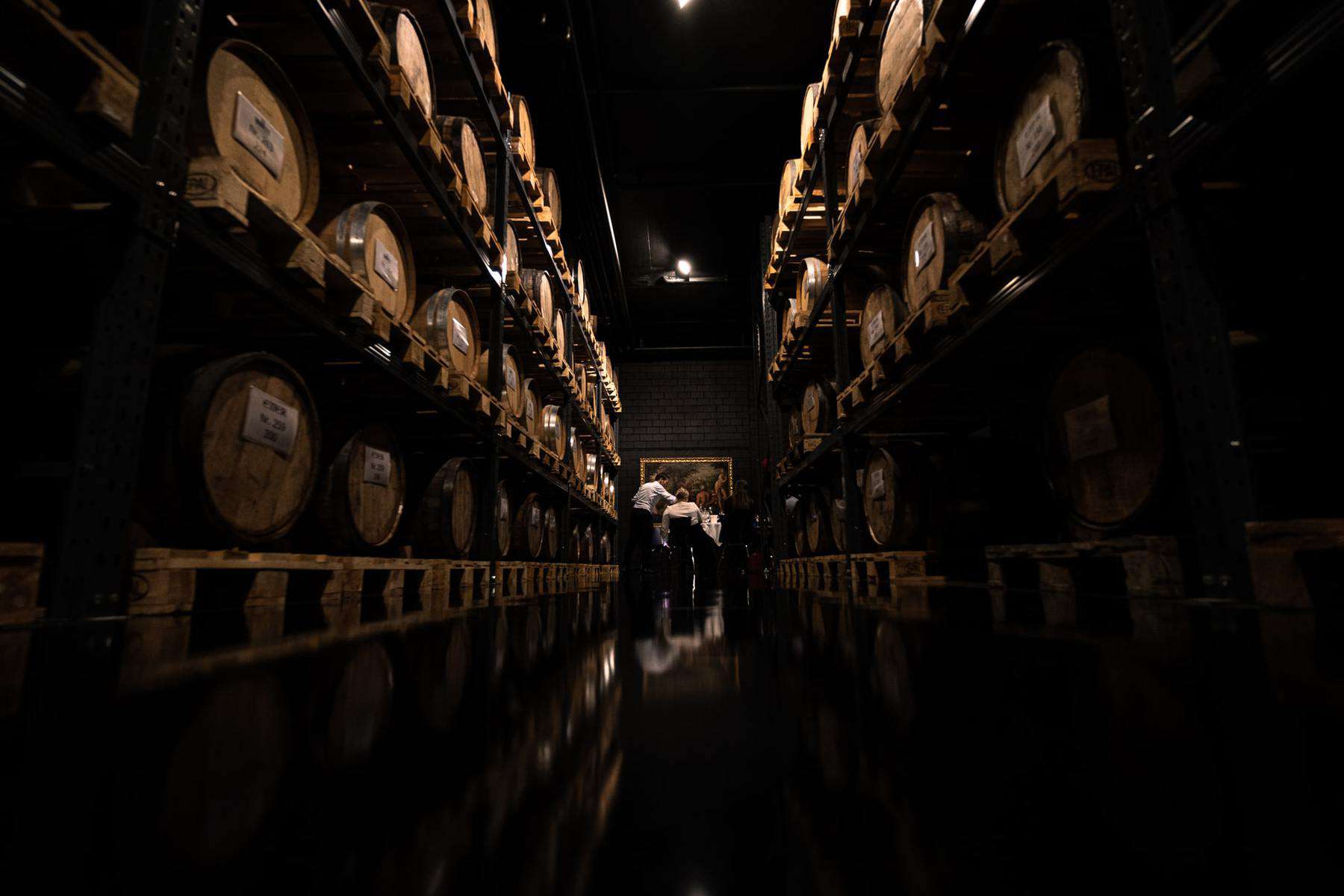
In the majority of cases, rum is made with molasses, a by-product of the sugar crystallization process, and contains up to 5% sugar.
How is Rum Made?
To create rum, sugar cane juice or molasses is combined with water and yeast and allowed to ferment. The resulting “wash” can next be distilled to make rum. The alcohol and water are boiled together, releasing vapors that, once they have cooled, are collected and then condensed.
After it’s been distilled, rum may be matured either in a stainless-steel tank or in barrels. Once aged, it is withdrawn from the barrel and put into bottles.
Where is Rum Made?
Almost everywhere! Even though rum manufacturing is usually connected with the Caribbean islands, where sugar cane grows abundantly, the delectable beverage is produced worldwide, with famous rums created nearly on every continent.
Types of Rum
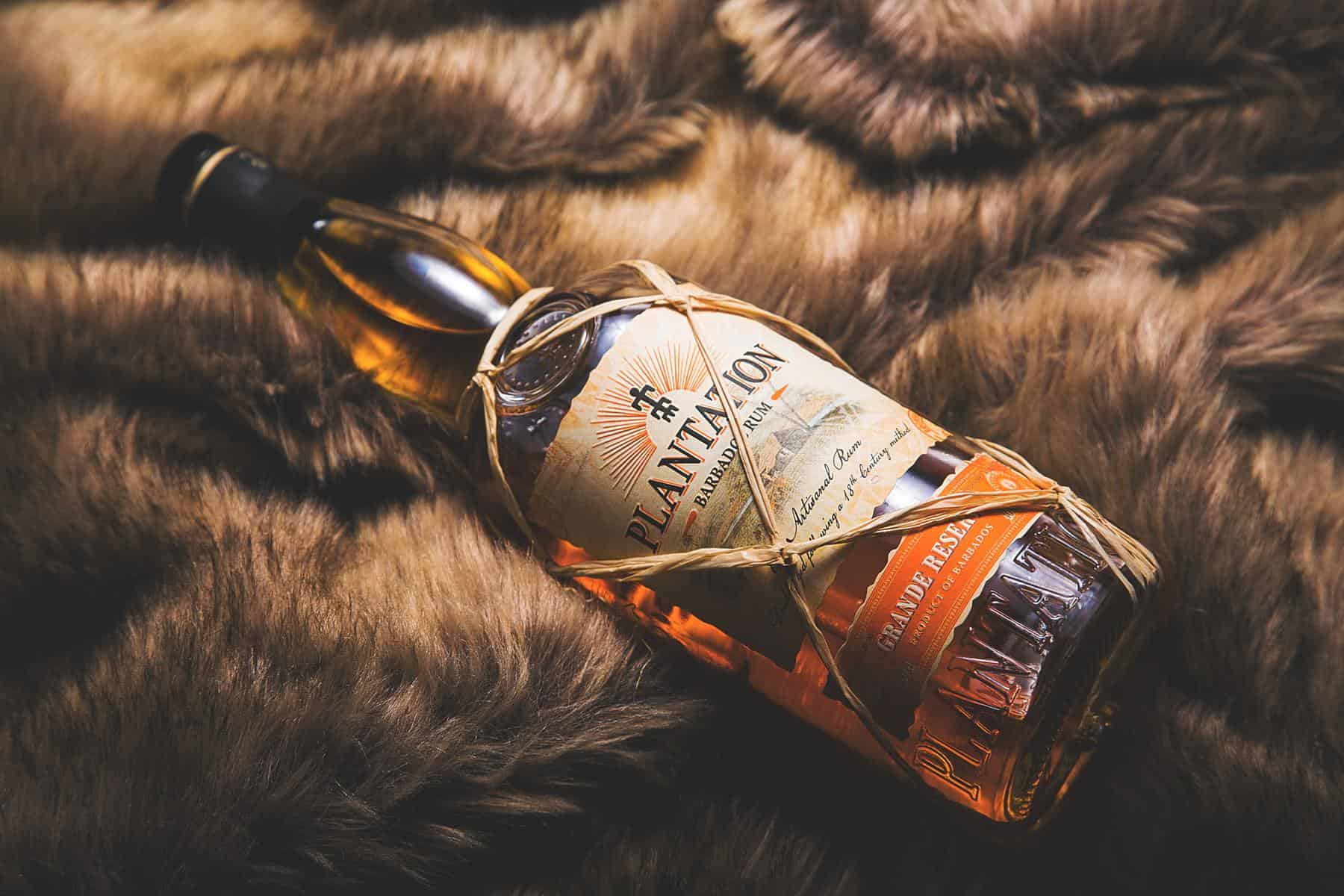
As with other iconic alcoholic beverages, not all rums are created equal. If you haven’t had the good fortune to taste every type of rum, you may be unaware of the diversity. Let us clear this up! Here’s a rundown of some of the most prominent rum varieties.
White Rum
White rum is colorless, has a softer aroma, and is typically lighter in density than gold or dark rums. These light rums are widely employed to prepare cocktails that do not require a strong rum character and are generally aged for a year or more before being filtered to eliminate color.
Gold Rum
As some rum ages in barrels, it develops caramel or gilded colors. These golden rums commonly have a richer depth of taste than white rums and are usually matured for several years. Citrus, caramel, vanilla, coconut, or almond notes may be prevalent depending on the type of cask chosen.
Dark Rum
Dark rum is the outcome of triple distillation, resulting in a heavier beverage with a darker color, as the name implies. The copper color of rum is given by the barrel, although it is possible to obtain darker rum by adding a pigment as well. Caramel is one such ingredient that provides a deeper, fuller hue to rum.
Premium Aged Rum
Most premium rums are matured for years in oak barrels to develop a stronger flavor character. The unique combination of alcohol and wood enhances rum’s richness, complexity, and delicate nuances. In many cases, these highly aged rums are consumed neat or on the rocks, much like an excellent cognac or single malt whisky.
Overproof Rum
A large percentage of rums sold in the United States is 80 to 100 proof (40% to 50% abv.). Most of the rums are diluted with water to a lower percentage, but some are not.
Overproof refers to rums with higher alcohol content. For instance, at 126 proof, Jamaica’s Wray and Nephew White Overproof Rum is one of the most renowned spirits in this regard.
Navy Rum has a longstanding tradition in the English Navy. Current Navy rums are primarily blends of drinks from the former British colonies of Barbados, Jamaica, British Guyana, and Trinidad, and are marketed with at least 55% alcohol by volume.
Spiced Rum
Clove buds, ginger roots, vanilla, cassia bark, or cinnamon are widely employed as flavoring elements in spiced rums. Furthermore, pineapple, citrus, mint, cherry, coconut, black currant, banana, and mango fruits also give exquisite aromas to the famous drink.
Rum Agricole
Rum Agricole is a subcategory of rum produced mostly in the French Caribbean islands, particularly Martinique, and is fermented from clean, fresh sugar cane juice. The spirit is distilled to about 70% alcohol by volume, which is higher than most molasses rums. This allows the drink to keep more of the genuine aroma of the whole sugarcane.
Cachaça
Cachaça, a Brazilian spirit, is one of the most recognized sugar cane beverages worldwide. It is manufactured with little or no barrel maturation, resulting in a rich-flavored drink that is most commonly used in cocktails.
What Affects Rum’s Taste?
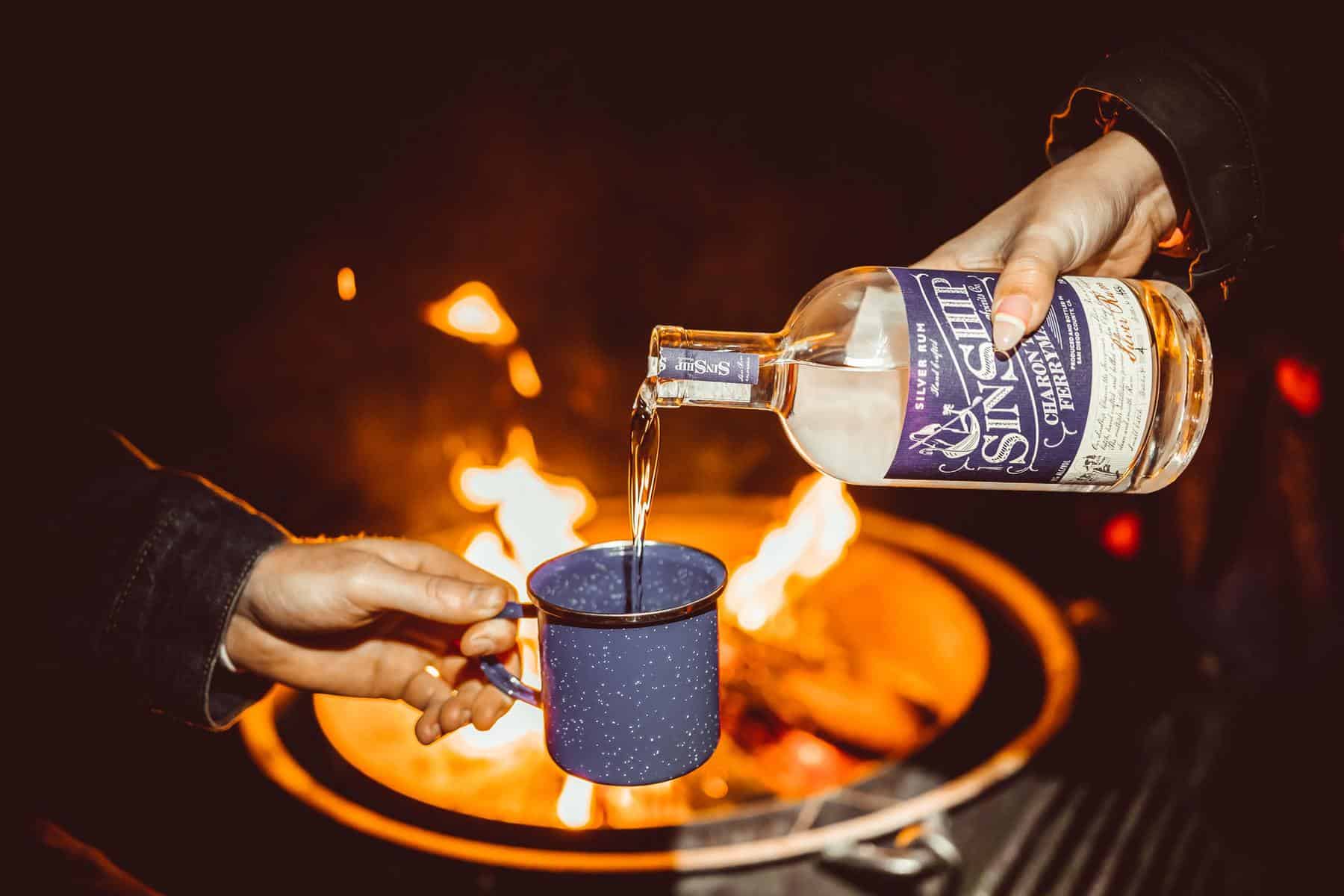
Fermentation
Fermentation accounts for at least 50% of rum’s quality, as during the process you get all the savories, the flavors, and the sophistication of the drink.
Distillation
Distillation intensifies the characteristics developed during fermentation, whether resorting to pot stills for a stronger spirit, column stills for a milder flavor, or a blend of the two. The skill of the distiller is to use the process in a way that separates and collects the alcohol and flavor compounds for the desired type of rum.
Barrel Aging
The range of maturing procedures is fairly broad. Barrels can be new or used, as some of them may have previously housed another liquid. Moreover, the time spent in the barrel may fluctuate. All these lead to an astoundingly diverse array of rum tastes.
What Characterizes High-Quality Rum?
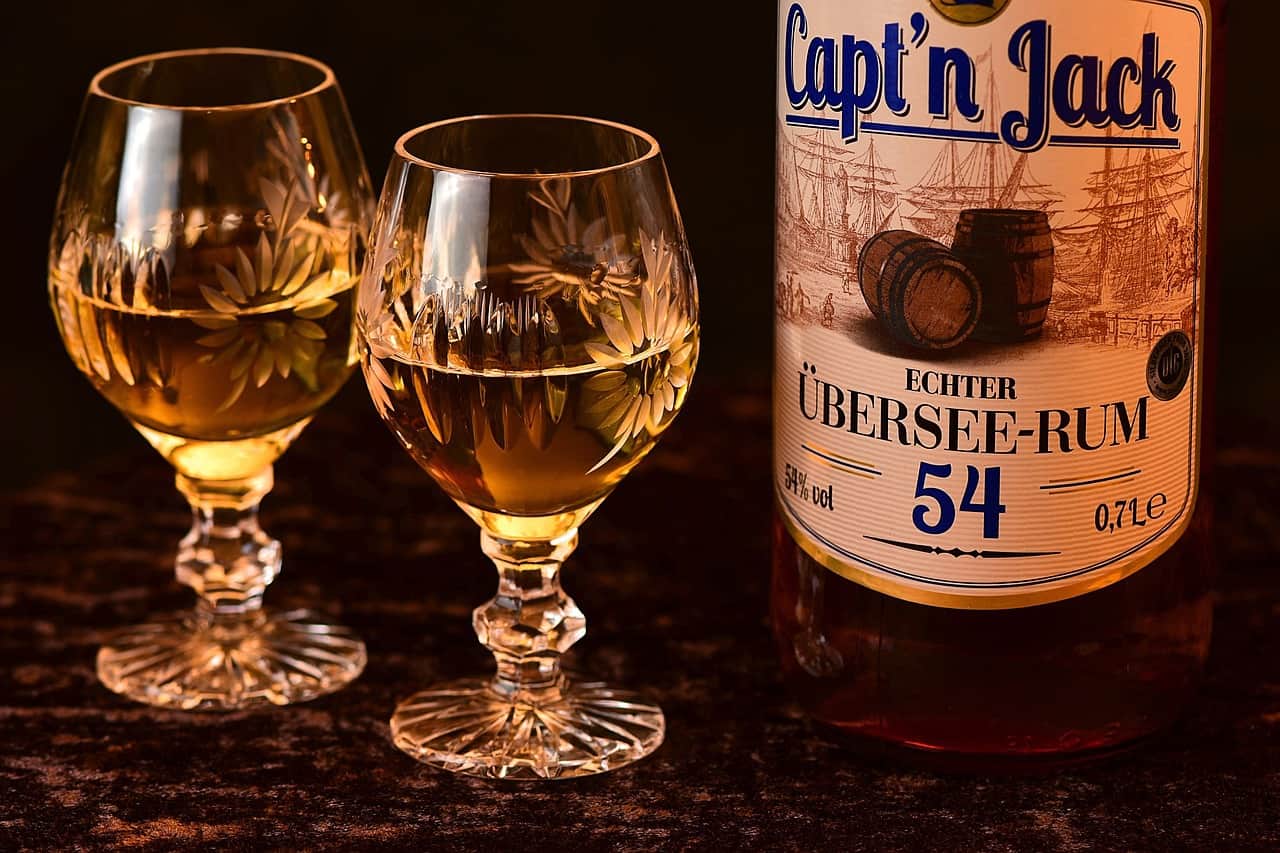
Basically, it is the same as wine; the older, the better. A high-quality rum should be exquisite and flavorful, letting the consumer sip, savor, and ponder the beverage in their glass.
However, each person has their own perspective on the best rum. Your preference might be Havana Club or Appleton Estate, whereas your neighbor might like Ron Matusalem. As they have done for years, others will serve only Bacardi.
There is no clear recipe for success, but the biggest advantage of rum is that there is truly an aroma for every palate. And most importantly, a good rum should make you smile.
Having said that, there is rum and then there is rum, which means that certain bottles might be more expensive and premium than others. So, which are the 15 most expensive rums in the world? Let’s find out, shall we?
15. New Grove Double Cask Moscatel Finish Rum – $95
Heavy and complex, the Double Cask Moscatel Finish Rum from Mauritius’s New Grove distillery was aged in French oak barrels for seven years, and after that, it was shifted to Moscatel wine casks for an additional year.
The Moscatel barrel imparts flavors of dry apricots, prunes, and a touch of nutmeg to the rum, in complement to the more traditional flavors of rich caramel and vanilla.
14. Bacardi Paraiso – $250
Paraiso is a mixture of rums aged up to 23 years and matured in cognac barrels. It was introduced as part of Bacardi’s ultra-premium line, the Facundo Rum Collection. The series is a tribute to the company’s father, Don Facundo Bacardi Masso, and includes four handcrafted variations, the majority of which are designed to be consumed dry.
13. Pyrat Rum Cask 1623 – $285
An American entrepreneur, Martin Crowley, developed Anguilla Rums on the island of the same name. This rum is a blend of nine premium Caribbean rums kept in oak barrels for up to forty years. It is an exquisite, balanced spirit with subtle aromas of toffee, vanilla, citrus fruit, and mild spice.
Each bottle is made of hand-blown glass and has a picture of Hoti, the patron saint and guardian of bartenders. All of this is contained within a handcrafted walnut case. What a presentation!
12. Rhum Clement Tres Vieux 1952 – $1,250
Habitation Clement has been producing rum for almost a century on the grounds of an old colonial sugarcane estate in Le Francois, Martinique. Homer Clement noticed a strong market for booze. Being an entrepreneur, apart from being the mayor of Le Francois during World War I, he purchased land and established the distillery, which he left to his son Charles.
It was the latter who gave Clement Rhum its complex taste. Since 1989, production has been relocated, and this first-class 1952 blend is the oldest Clement Rhum produced in its original place.
11. Havana Club Maximo Extra Anejo – $1,350
Jose Arechabala founded the Havana Club trademark in 1878, and the company remained in the family until 1959, when the national regime confiscated the distillery during the Cuban Revolution. However, Havana Club was still a big hit, and in 1994, the French liquor company Pernod Ricard teamed up with the state-owned company.
This ultra-high-end, extra-aged rum has 40% alcohol and is a blend of rums of various ages. Maximo is a constant addition to the brand’s portfolio, with only 1,000 bottles made available each year.
10. Brugal Papa Andres – $1,500
To celebrate the corporation’s 125th anniversary, Brugal Papa Andres was produced in 2013. Dubbed in honor of the rum brand’s founder, Don Andres Brugal, this superior rum was originally reserved for the exclusive use of the Brugal family. It is sourced from a secret collection of barrels stored for more than a century in Brugal’s Puerto Plata vaults.
The company’s exclusive approach contributes significantly to the bottle’s exorbitant price, but when a rum has a four-digit price tag, one expects the inside to be extraordinary. Well, it is!
9. Ron Bacardi de Maestros de Ron Vintage, MMXII – $2,050
This was another special rum manufactured by Bacardi for Y2K, which explains the 2K price tag. Only 1,000 bottles were manufactured worldwide, and only 200 were made accessible to the general public. This rum comes in a hand-blown crystal decanter with a walnut finish and boasts a protective case and a short brochure about how it was made.
To try the MMXXII, most of us would have to look for a venue that sells it, and even then, we’d have to pay an astronomical price for a single shot. However, its extraordinary array of impressive blends is worth the money and the fuss.
8. 8-year-old Bacardi, Millennium Rum Atlantis Special Edition – $2,800
Designed for the Atlantis Resort on the Bahamas’ Paradise Island to commemorate the new millennium, this bottle represents the pinnacle of Bacardi’s portfolio and only 3,000 uniquely numbered bottles were produced.
This rum’s flavor is creamy and luscious, brimming with tropical fruits, citrus peels, and winter spice. The aftertaste is delicate and exquisite.
7. Bacardi Superior Rum Bottled in Spain in the 1940s – $2,825
Bacardi was established in 1862 in Santiago de Cuba and is one of the world’s largest independently managed, family-owned spirits businesses. Facundo Bacardi Masso, a Spanish immigrant, produced the world’s first white rum by purifying it using charcoal and aging it in white oak casks, which softened the beverage.
When Fidel Castro’s Cuban Revolution conquered the island in the 1960s, Bacardi successfully concealed its unique recipe, brand, and holdings in the Bahamas. It eventually relocated to Puerto Rico and Mexico, which facilitated trade with the United States.
This is one of the oldest bottles of Bacardi when Bacardi was still made in Cuba, and it is a tremendous piece of rum heritage.
In 1655, the English marines received their first daily taste of Jamaican rum. A significant component of British naval life, the allotment, or “tot”, was decreased in the early 1900s before being phased out entirely in 1970. This brought a stop to nearly 300 years of practice on July 31st, also known as Black Tot Day.
To mark the 40th anniversary of the event, the surviving stock was re-bottled in 2010 under the label “Black Tot: Last Consignment,” thus its imperial value and high price.
5. 50-year-old Appleton Estate – $6,500
The Appleton Estate 50-Year Rum was created in 1962 to honor Jamaica’s complete independence from the United Kingdom. Several barrels of Appleton rum in various blends were reserved by the premium rum distillery with the sole intention of maturing them for 50 years.
The rum has a monumental caliber, with a complexity of tastes and an overall heaviness corresponding with its 50 years in oak, yet without being overly harsh. Besides that, what makes it noteworthy is also the fact that only 800 bottles were ever made.
4. Barbados Private Estate 1780 – $12,700
More than two centuries in a bottle! This is a blend of light and dark flavors, and it is one of the oldest and most costly rums of all time, having been found in 2011 by the Earl of Harewood’s aristocrats in their cellar.
The rum was distilled in 1780 and was originally part of a much greater selection derived from the family’s legendary Barbados plantation ownership. Trying a rum from 1780 is a once-in-a-lifetime opportunity to spend a few minutes wandering around in a time machine. Luckily, dreaming is free!
3. 1976 Dictador Generations en Lalique Rum – $16,500
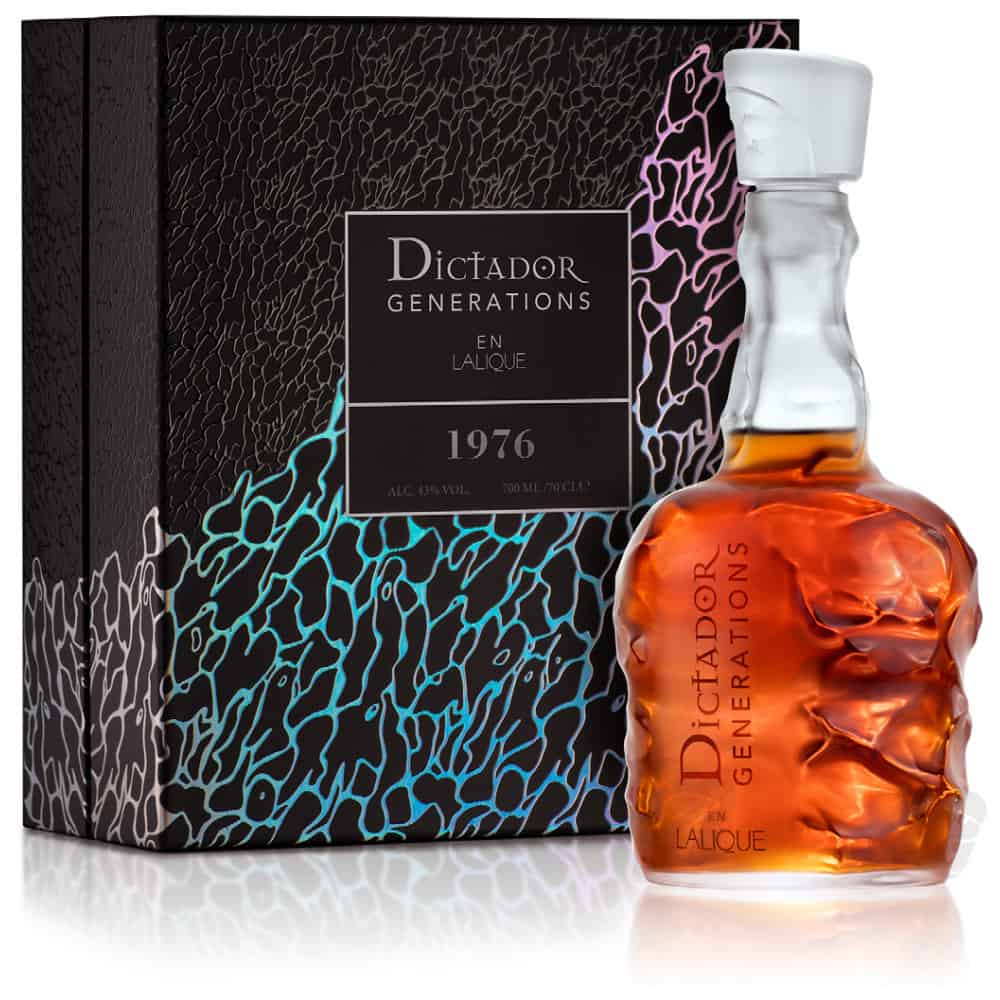 The Lalique Dictador 1976 Generations is the first collaboration between a rum producer and the renowned French crystal designer. This rum has a rich and smoky aroma, with strong flavors of dark chocolate, suede, and Madagascar vanilla beans. A lovely blend of roundness, diversity of flavors, and the unusual spicy aromas brought by the American oak barrel.
The Lalique Dictador 1976 Generations is the first collaboration between a rum producer and the renowned French crystal designer. This rum has a rich and smoky aroma, with strong flavors of dark chocolate, suede, and Madagascar vanilla beans. A lovely blend of roundness, diversity of flavors, and the unusual spicy aromas brought by the American oak barrel.
Worldwide connoisseurs, professionals, and investors in premium spirits will recognize that Lalique’s expressive, magnificent crystal carafe for Dictador is as much a masterpiece as it is a container for great rum. Each bottle is individually numbered.
2. Legacy by Angostura – $25,000
Launched in 2012 to commemorate Trinidad and Tobago’s 50th anniversary of independence, just 20 exquisitely designed corked bottles of Angostura’s Legacy were offered for a “modest” $25,000. All the bottles were quickly sold. The rum itself is a mix of the brand’s seven most eccentric and highly regarded flavors, each aged at least 17 years.
The bottle, designed by British jeweler Asprey, is adorned with sterling silver and comes encased in a leather-handcrafted hardwood box upholstered with velvet and silk.
1. J. Wray & Nephew 1940s Rum – $54,000
It’s not surprising that the most expensive rum originates from an island made famous by pirates and bad guys who appreciated their drink: Jamaica. In 1825, a man called Wray opened a bar in what would later be the country’s capital, Kingston. Since then, the rum distillery has grown to be one of the most profitable companies of its sort in the archipelago.
This 1949 bottle of rum is believed to contain a 25-year-old liquid from around 1915, and there are only four confirmed bottles remaining.
Final Words
When one analyzes rum, several classic pictures may pop up. Think! What comes instantly to your mind? The Godfather. Pina Coladas on the Caribbean beach. Daiquiris at La Floridita and mojitos at La Bodeguita del Medio in Havana. And, of course, Jack Sparrow from Pirates of the Caribbean.
There is no doubt that rum has a rich and powerful history, and all the expensive bottles mentioned above are clear proof that rum has returned. And this time is for good!
Contents
- Rum’s History
- What is Rum Made Of?
- Types of Rum
- What Affects Rum’s Taste?
- What Characterizes High-Quality Rum?
- 15. New Grove Double Cask Moscatel Finish Rum – $95
- 14. Bacardi Paraiso – $250
- 13. Pyrat Rum Cask 1623 – $285
- 12. Rhum Clement Tres Vieux 1952 – $1,250
- 11. Havana Club Maximo Extra Anejo – $1,350
- 10. Brugal Papa Andres – $1,500
- 9. Ron Bacardi de Maestros de Ron Vintage, MMXII – $2,050
- 8. 8-year-old Bacardi, Millennium Rum Atlantis Special Edition – $2,800
- 7. Bacardi Superior Rum Bottled in Spain in the 1940s – $2,825
- 6. Original Royal Naval Rum Tot – $2,900
- 5. 50-year-old Appleton Estate – $6,500
- 4. Barbados Private Estate 1780 – $12,700
- 3. 1976 Dictador Generations en Lalique Rum – $16,500
- 2. Legacy by Angostura – $25,000
- 1. J. Wray & Nephew 1940s Rum – $54,000

